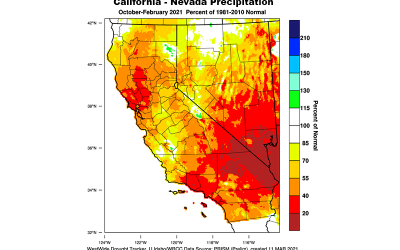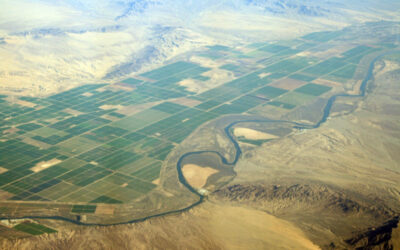Ariel Choinard, M.A., started at DRI in February 2023 as the project coordinator for the California-Nevada Adaptation Program (CNAP) and the new Southern Nevada Heat Resiliency Lab. She is working with Tamara Wall, Ph.D., to build connections between scientists, community members, and community organizations to co-produce solutions, adaptations, and resilience to climate hazards.
DRI’s CNAP Project Selected as Regional Model for Building National Climate Adaptation
DRI is leading the way in building regional climate resiliency through the California-Nevada Adaptation Program, which will prepare communities for local-level action to address climate hazards including extreme heat and wildfire smoke, water scarcity, and coastal flooding.
DRI Leading $5 Million Regional Climate Adaptation Project
With $5 million from NOAA’s Climate Adaptation Partners initiative, CNAP will focus on preparing communities to address local climate hazards.
Drought Conditions Intensify Across California and Nevada
U.S. Drought Monitor shows that 91 percent of California and 100 percent of Nevada now in drought, according to a Drought Status Update.
DRI scientists investigate effectiveness of heat warnings along US-Mexico border
Featured research by DRI’s Kristin VanderMolen, Ben Hatchett, Erick Bandala, and Tamara Wall.
In July and August, daytime temperatures along parts of the US-Mexico border can reach as high as 120 degrees – more than 20 degrees above normal human body temperature. For agricultural workers and others who live and work in the region, exposure to these extreme high temperatures can result in serious health impacts including heat cramps, heat exhaustion, heat stroke, and heat-related death.
Why scientists are studying stories during the COVID-19 pandemic
The family dinner table. The water cooler with coworkers. Your social media feed. Bedtime with your toddler. What do all these places have in common? They’re full of stories. Look closely at your day and, chances are, you’ll notice that stories permeate just about...
What is your COVID-19 story?
New study collecting human experiences emerging from the global pandemic Reno, Nev: (Tuesday, March 31, 2020) – As the number of people and communities impacted by the novel coronavirus (COVID-19) continues to grow by the hour, a group of social scientists has turned...
Southwest Climate Adaptation Science Center Receives $4.5M for Continued Research
Reno, Nev. (Nov. 15, 2018) - The Southwest Climate Adaptation Science Center (SW CASC), a collaborative partnership between regional research institutions and the United States Geological Survey (USGS), recently received a five-year, $4.5 million grant from the USGS...
DRI and Scripps Oceanography receive $3 million NOAA grant to help decision makers prepare for extreme events
Reno, NV (Friday, November 17, 2017): A climate research program led by scientists at the Desert Research Institute (DRI) and the Scripps Institution of Oceanography at the University of California, San Diego has received funding from the National Oceanic and...




